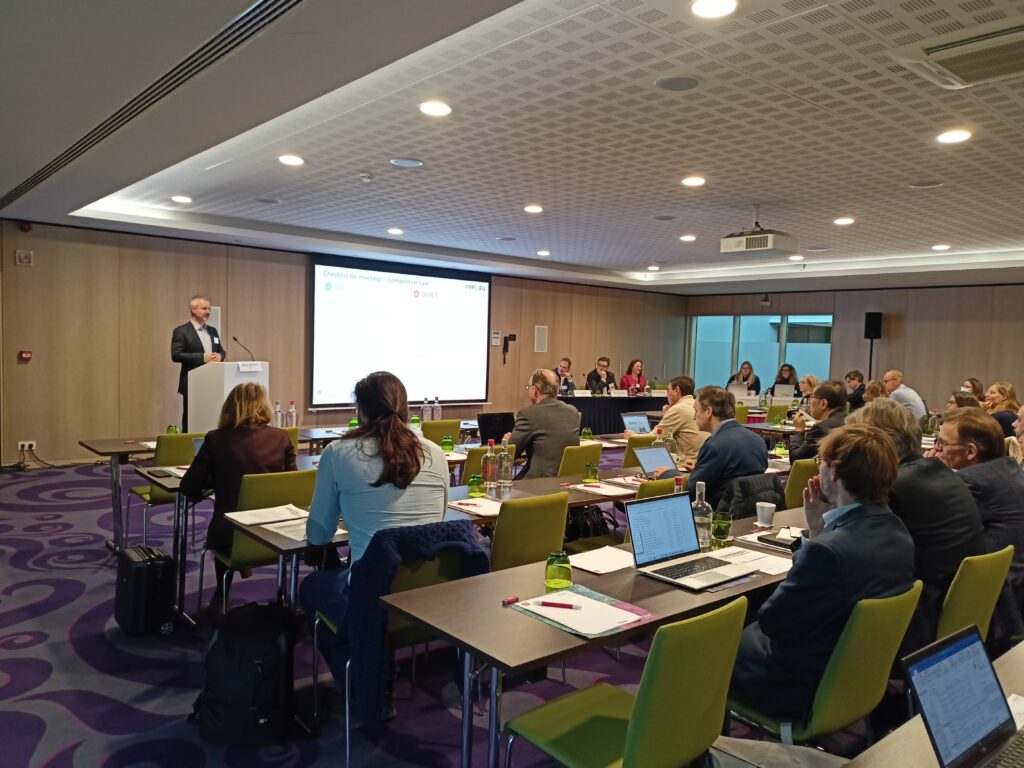Reaching a science-informed wide PFAS restriction will depend on inputs from all stakeholders
The upcoming restriction on PFAS, foreseen to be published in February 2023, could set a precedent for many other restrictions targeting groups of substances. Therefore, Cefic’s Director General Marco Mensink called on downstream users to bring their data to the table. He reflected during the second FPP4EU Collaboration Platform Workshop with stakeholders held in December 2022: “We are highly motivated to come to a regulatory measure that is workable for all. Collaboration is the only answer. Not only between industry and regulators, but also with downstream users. We need to understand where alternatives exist, where PFAS are crucial to vital applications, and what impact a restriction could have”.
Giuseppe Casella, Head of Unit – DG GROW, European Commission also encouraged stakeholders to get involved in the consultation processes. “It is very important to base a restriction on good information. To get a good picture of the sector as a whole, we encourage joint inputs”.
Although the restriction proposal is to be published very soon, manufacturers and downstream users of PFAS still have time to provide much needed data in 2023. Martijn Beekman, Policy Officer, Reach Unit – DG GROW, European Commission reminded that there are two moments in any REACH restriction process where stakeholders have a chance to provide feedback. Michael Gmeinder, Risk Management II Unit – European Chemicals Agency (ECHA), clarified that this is why ECHA intends to pre-publish the dossier in early February to give stakeholders an additional 1.5 months to analyse the potential impact and prepare their input. The first 6-month public consultation for the upcoming PFAS restriction is foreseen to start on 22 March 2023. The 60-day public consultation process will be held after ECHA’s Committee for Socio-economic Analysis has prepared a draft opinion based on the inputs received. Given the complexity of the file due to the number of PFAS and uses in scope, Gmeinder did not rule out the need for additional ad hoc meetings.
An alternative restriction proposal?
There is no question that a regulatory measure for PFAS is needed. But what should such a measure look like? Nicolas Robin, Director of Plastics Europe’s Fluoropolymers Product Group (FPG) put forward an alternative proposal to the upcoming restriction for fluoropolymers, based on a recently published Regulatory Management Options Analysis. It concludes that the preferred option is a mix between a REACH restriction that includes a broad derogation to allow continued manufacture and use of fluoropolymers (one type of PFAS), supplemented by a Voluntary Industry Initiative which guarantees that industry will address concerns related to their manufacture and use. This option also foresees an update of the existing EU rules on the recycling of fluoropolymer products and articles.
A ban on all PFAS would impact sectors beyond the chemical industry
The complexity of supply chains should not be underestimated
PFAS are used across many value chains so mapping all of their uses is a complex task. Moreover, PFAS are used in many applications critical for the achievement of the European Green Deal goals. For example, PFAS are integral to the hydrogen value chain, not only for the production of fuel cells and electrolysers, but also its distribution and storage.
Where the automotive industry is concerned, car manufacturers are mainly responsible for assembling the car. 80% of the car parts come from the supply chain. Even with the International Material Data System (IMDS) in place – a tool used to track materials used along the value chain – not 100% of “the chemicals recipe” can be given away due to intellectual property rights.
Finding alternatives is difficult
A comprehensive mapping of the use of PFAS in medical devices revealed that PFAS are used in a wide range of critical medical technologies. PFAS offer a combination of properties such as chemical and heat resistance, lubrication, biocompatibility, and durability that makes them the only existing chemical for use in many applications. Alternatives are not always available and, in certain cases, are other PFAS. When considering a transition to a potential non-PFAS alternative, it is important to consider patient well-being, and the timeline and requirements under sectoral legislation. Similar situations apply to water and waste-water treatment, and for the refrigeration, air conditioning and heat pump sector, just to list a few examples.
The collaboration spirit is high
During the workshop, all parties acknowledged that the wide PFAS restriction is unprecedented in its number of covered substances and use categories. Representatives of national competent authorities reiterated their call to everybody concerned to participate in all upcoming consultations. Industry representatives raised many questions on timing, potential derogations, awareness on PFAS through the value chain and stand ready to continue feeding information into the process.
To conclude, only a good collaboration between all parties will allow the wide PFAS restriction to be optimally informed, balanced and addressing the public concerns, whilst taking into account the exemptions our society needs.

